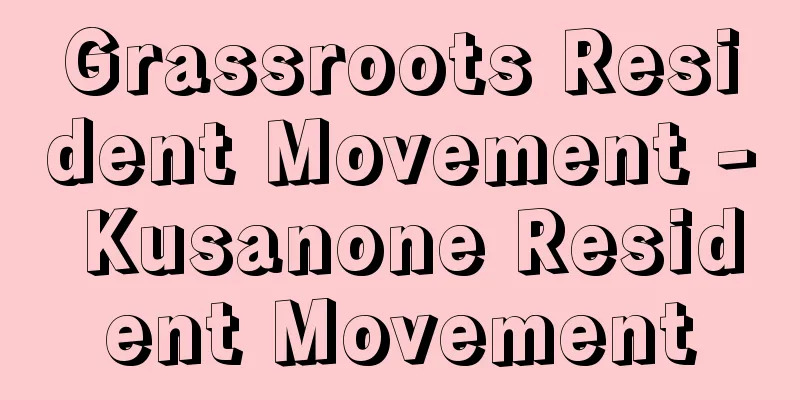Masaru Inoue - Inoue Masaru

|
Year of death: August 2, 1910 (Meiji 43) Year of birth: Tempo 14.8.1 (1843.8.25) A railway bureaucrat in the Meiji period. Born in Hagi as the third son of Inoue Katsuyuki, a samurai of the Choshu (Hagi) domain. His childhood name was Uhachi, and at the age of six he was adopted into the Nomura family and changed his name to Yakichi. In Nagasaki he learned Western military tactics from a Dutch teacher, Western studies at the Shogunate's Bansho Shirabesho, and English from Takeda Fusaburo in Hakodate. His travel expenses were paid for by Enomoto Rokubei of Daikokuya, a purveyor to the Choshu domain, on the guarantee of Murata Zoroku (Omura Masujiro), and with the help of the manager of the Yokohama branch of Jourdain Matheson & Co., he stowed away to England in 1863 (Bunkyu 3) with Ito Shunsuke (Hirofumi), Shido Monta (Inoue Kaoru), Yamao Yozo, and Endo Kinsuke, and studied railways, mining, and minting technology at the University of London, before returning to Japan in 1868 (Meiji 1). He was re-registered with his parents while in England, and took the name Katsu after returning to Japan. In October 1800, he was appointed as the new government's chief miner and chief of mines, and in August 1801 he was appointed chief miner and chief railway officer. In July of the following year, he became full-time chief railway officer and worked hard to open the railway between Tokyo and Yokohama. In July 1803, he resigned from his position as chief railway officer due to a difference of opinion with Yamao, but was reinstated in January of the following year at Ito's request, moved the railway dormitory to Osaka, and opened the railway between Osaka and Kobe. In January 1817, he was appointed director of the Ministry of Public Works' Railway Bureau when it was established, and in May of the same year, he established a training school for engineering students within the Osaka Station premises and worked to train Japanese engineers. He himself became the chief engineer for the construction work between Kyoto and Otsu, completing the work with Japanese efforts alone. A proposal to change the already decided Nakasendo Line construction plan to the Tokaido Line construction was submitted, and in July 1819, the government officially approved the change. In September 1948, he became Director General of the Railway Bureau, and in July of the following year, he submitted a "Discussion on Railway Strategy," in which he advocated nationalization of the railways, including the acquisition of major private railways. However, as opposition from private railway operators grew, he resigned from his position in March 1951. Thereafter, in order to promote the domestic production of railway vehicles, he established the Steam Locomotive Manufacturing Limited Partnership Company (with capital of 640,000 yen) in September 1954, with the support of Inoue Kaoru and Shibusawa Eiichi, and became the company's president. In 1967, he became chairman of the Imperial Railway Association, and the following year, he died in London while inspecting European railway operations as an advisor to the Railway Bureau. His grave is at Tokai-ji Temple in Shinagawa, overlooking the Tokaido Line and Yamanote Line. <References> Ueda Hiroshi, "The Life of Inoue Katsu," and Noda Masaho et al. (eds.), "Japan's Railways." (Minoru Sawai) Source: Asahi Japanese Historical Biography: Asahi Shimbun Publications Inc. About Asahi Japanese Historical Biography |
|
没年:明治43.8.2(1910) 生年:天保14.8.1(1843.8.25) 明治時代の鉄道官僚。長州(萩)藩士井上勝行の3男として萩に生まれる。幼名卯八,6歳で野村家の養子となり弥吉と改名。長崎でオランダ人教師から洋式兵法,また幕府の蕃書調所で洋学,さらに箱館の武田斐三郎から英語を学んだ。洋行費を村田蔵六(大村益次郎)の保証で長州藩御用達大黒屋榎本六兵衛が立て替え,ジャーデイン・マセソン商会の横浜店支配人の手助けにより,文久3(1863)年伊藤俊輔(博文),志道聞多(井上馨),山尾庸三,遠藤謹助と共にイギリスに密航,ロンドン大学で鉄道,鉱山,造幣技術を学び,明治1(1868)年に帰国。在英中に実家に復籍し,帰国後は勝を名乗った。2年10月新政府の造幣頭兼鉱山正に任ぜられたのち,4年8月鉱山頭兼鉄道頭に就任,翌年7月鉄道頭専任となり,東京・横浜間の鉄道開業に尽力した。 6年7月山尾との意見対立から一旦鉄道頭を辞任するが,伊藤の要請によって翌年1月復職,鉄道寮を大阪に移して大阪・神戸間の鉄道を開通させた。10年1月工部省鉄道局の設置にともない局長に就任,同年5月大阪停車場構内に工技生養成所を設けて日本人技術者の育成に努め,京都・大津間の建設工事では自らが技師長となり日本人独力で工事を完成させた。すでに決定していた中山道線建設案の東海道線建設への変更を上申し,19年7月政府はこれを正式に決定した。23年9月鉄道庁長官に就任,翌年7月「鉄道政略ニ関スル議」を上申して主要私設鉄道の買収を含む鉄道国有論を主張,しかし民間の鉄道業者らの反対が強まる中で26年3月鉄道庁長官を辞任。その後は鉄道車両の国産化を進めるため,井上馨,渋沢栄一らの賛同を得て29年9月に汽車製造合資会社(資本金64万円)を設立,同社社長に就任した。42年帝国鉄道協会会長に就任,翌年鉄道院顧問としてヨーロッパの鉄道事業を視察中ロンドンにて客死。墓所は東海道線と山手線を見下ろす品川の東海寺にある。<参考文献>上田広『井上勝伝』,野田正穂他編『日本の鉄道』 (沢井実) 出典 朝日日本歴史人物事典:(株)朝日新聞出版朝日日本歴史人物事典について 情報 |
Recommend
Maritime History Series - Kaiji Shiryo Sosho
Edited by Sumita Shoichi. 20 volumes. Published in...
Mandibular nerve
The third branch of the trigeminal nerve. It is a ...
Destruction - fracture
When stress acts on an object, it is called ruptur...
charamela
...wind instrument. A corruption of the Spanish a...
Rikumi - Kugami Noru
⇒Kuga-Katsunan Source: Kodansha Digital Japanese N...
Intersubjective constructivism
...This, combined with the knowledge of quantum m...
Andromache (English spelling)
A Greek tragedy by Euripides written in the early ...
Kamo Taketsunomi no Mikoto - Kamo Taketsunomi no Mikoto
The ancestor of the Kamo no Agata-nushi (a clan t...
Inugami-suji
〘 noun 〙 A family line possessed by an inugami (do...
Uesugi Shinkichi
Constitutional scholar. Born in Fukui Prefecture ...
Agades (English spelling)
A city in central Niger. The capital of Agadez pre...
Toy Fireworks - Omocha Hanabi
These are small, easy-to-use fireworks that childr...
Inori - Prayer
...Among the Hayashigoto kodan, which consists of...
The Strange Case of Dr. Jekyll and Mr. Hyde
A novella by British author R.L. Stevenson. Publi...
Umeiro (English spelling) Yellowtail Blue Snapper
A marine fish of the family Lutjanidae (illustrati...



![Mifune [town] - Mifune](/upload/images/67ccf56968e2b.webp)


![Bibai [city] - Bibai](/upload/images/67cca09a3db8c.webp)


